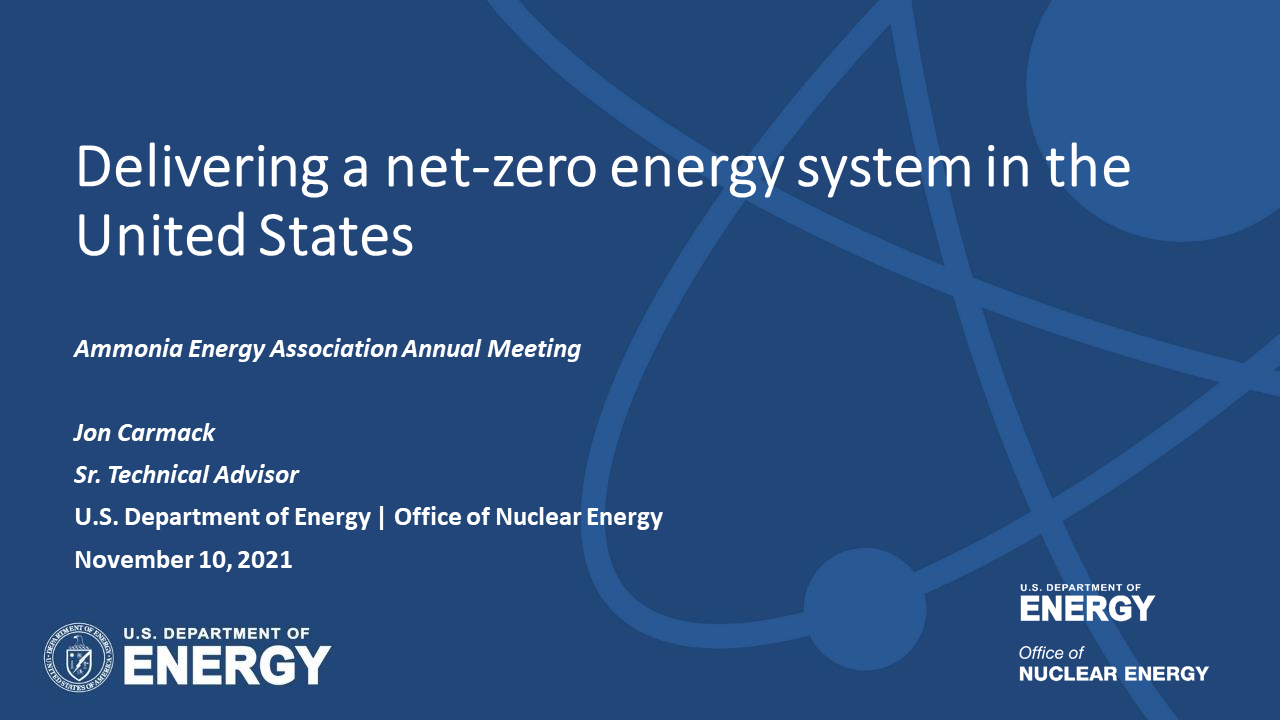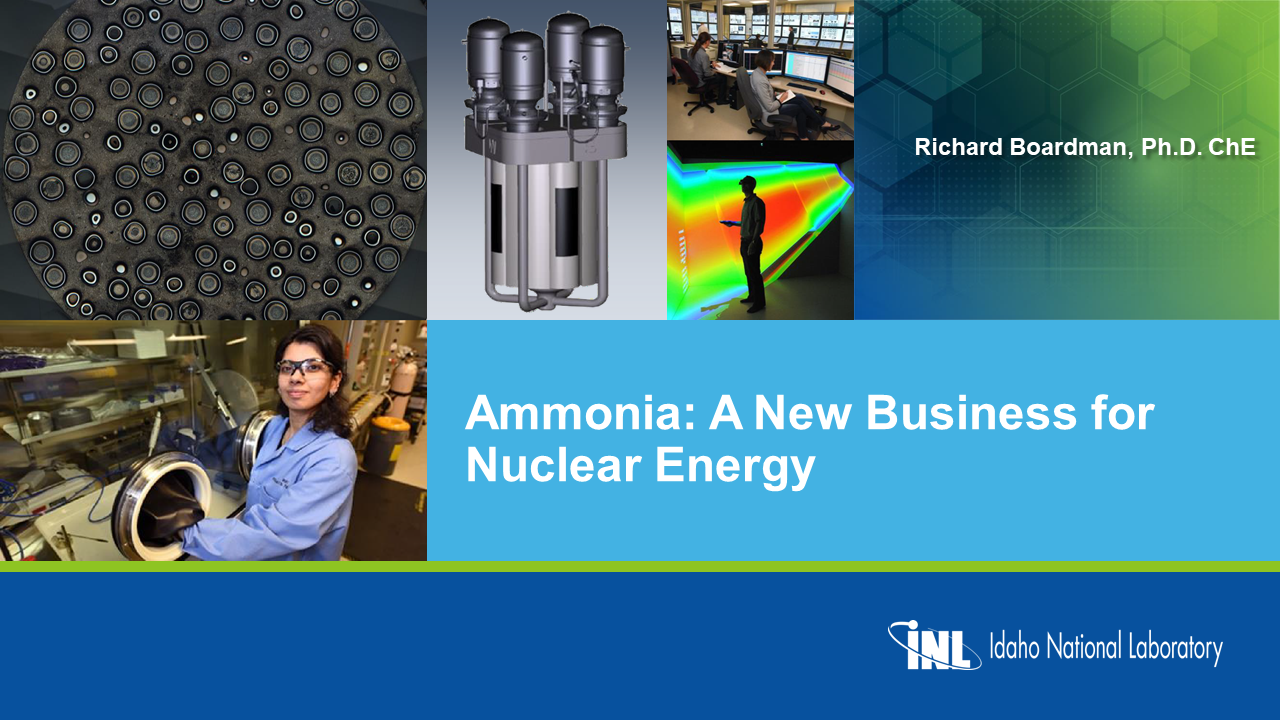The potential for nuclear-powered ammonia production is developing fast. Two seperate industrial consortia (Copenhagen Atomics, Alfa Larval & Topsoe, and KBR & Terrestrial Energy) have formed to develop thorium-fueled reactors, and hydrogen & ammonia production is a key part of their plans. Given nuclear electricity dominates France’s energy mix, a grid-connected electrolyser project at Borealis’ fertiliser production plant in Ottmarsheim, France will be one of the first examples of commercial-scale, nuclear-powered ammonia production. And, while capital costs & lead times remain significant, mass production of new technologies and research into flexible power production capabilities are emerging as key to unlocking nuclear-powered ammonia production.
Content Related to Idaho National Laboratory
Presentation
Ammonia: A New Business for Nuclear Energy
Nuclear Energy can be used to support and help decarbonize traditional steam methane reforming and electrolysis to produce hydrogen. Options for integrating nuclear with ammonia, and ammonia derivatives include providing power to an air separation unit to produce nitrogen, and hydrogen combustion to deplete oxygen while providing heat for high temperature steam electrolysis. A comparison of CO2 emissions reduction and costs of urea synthesis indicate there is a strong business case for using nuclear reactors at large and small-distributed ammonia plants. A case for producing 3 tons of ammonia from a 1-MWe power supply will be given.
Article
Terrestrial Energy and the Production of Carbon-Free Ammonia
Stephen H. Crolius March 16, 2017
On January 24, the nuclear energy company Terrestrial Energy USA informed the United States Nuclear Regulatory Commission of its plans “to license a small modular, advanced nuclear reactor in the United States.” Many steps later – sometime in the 2020s – the American subsidiary of the Canadian company Terrestrial Energy, Inc., hopes to bring its IMSR technology to market. IMSR stands for integral molten salt reactor. The IMSR stands apart from conventional nuclear technology on several dimensions. On the dimension of operating temperature, the IMSR is hot enough that it can be beneficially integrated with high-temperature industrial processes. According to the company’s research, ammonia production could be a candidate for such integration.
Presentation
Nuclear Ammonia — A Sustainable Nuclear Renaissance’s “Killer App”
Nuclear Ammonia — A Sustainable Nuclear Renaissance’s “Killer App” Darryl Siemer, Idaho National Lab (retired), Kirk Sorensen, Flibe Energy, and Bob Hargraves, Institute for Lifelong Learning, Dartmouth College




